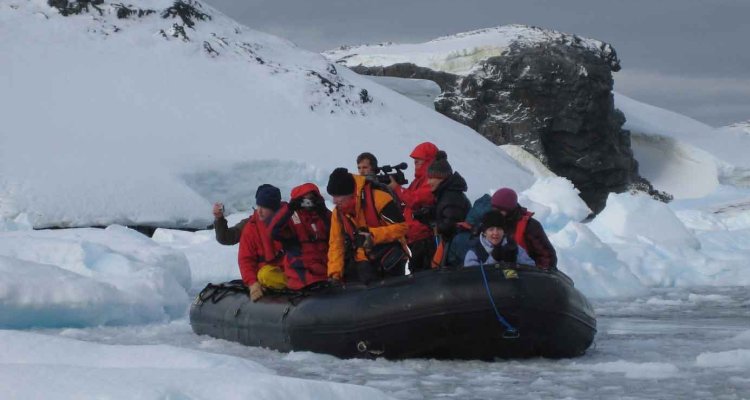
News
WUR receives grant for research on responsible tourism to Antarctica
Machiel Lamers (environmental policy) and Bas Amelung (environmental systems analysis at ESG) have received a grant from the Dutch Research Council (NWO) for the ANTARC-SHIP project entitled: Fostering environmental stewardship among Antarctic tourism governance actors and institutions. Together with Utrecht University and two New Zealand universities, they want to ensure that tourism in the South Pole develops in a way that does not undermine the fragile ecosystem. This is important as it turns out that melting ice caps are not the only threat to Antarctica; increasing tourism also has an impact on nature. The project is part of four studies into tourism on the continent and falls under the Dutch Research Agenda (NWA) Polar Tourism programme. All projects explore possible ways of bringing tourism and nature into harmony in Antarctica.
Environmental stewardship
Machiel Lamers has received a grant from the NWO to investigate how we can better regulate tourism in the South Pole: “Countries that are members of the Antarctic Treaty system, including the Netherlands, are responsible for policy in Antarctica. Reaching a consensus on tourism regulation is taking a long time. In the meantime, we depend on initiatives from, for example, tourist companies, port cities that we depart from, and scientific research stations for policies in order to limit the environmental consequences. There is a moratorium on mining and oil extraction, and a comprehensive regulatory system for the fishing industry around Antarctica, but not for tourism.” As outlined in the project proposal, ‘this project explores how environmental stewardship can be understood, assessed, promoted, and embedded in the policies of both private and public organisations.’
Strong growth
An increasing number of tourists are heading to the coldest continent on Earth to watch penguins, walk across endless ice fields, or kayak along the ice floes. The only sound you hear comes from a whale or an albatross. In the year before the coronavirus pandemic took hold (2019-20), the Antarctic received around 75,000 tourists: in the coming season (2022-2023) this is expected to increase to more than 100,000. They travel by cruise ship or plane and must adhere to guidelines from the tourism sector: you are only allowed to walk in certain places under the supervision of a guide. You are also not allowed to go near the birds.
Tourism in the Antarctic is growing and becoming increasingly diverse, with the consequences for nature, heritage, and science unclear. Machiel Lamers: “Dutch tourists have been in the top ten of Antarctica visitors for years, along with other Northern Europeans and Americans. There are also lots of Chinese visitors. The question is what consequences this growth may have in terms of environmental standards and the willingness of interested parties to continue to work towards the conservation of nature in Antarctica.”
Disruption of nature
What damage can a tourist do on such a huge continent? Lamers is clear about this: “Antarctica was a continent without people for a long time; all activities therefore lead to disturbance of nature. Due to the vulnerability of nature, a small incident can have major consequences for nature. Getting too close to bird colonies will scare them from their nests, exposing the eggs to birds of prey and freezing temperatures. An entire breeding season can be lost with one small misstep. If a hiker fails to stay on the trails, they could trample on ancient mosses that sometimes take 25 years to grow. Due to the absence of responsible government bodies, we often have to depend on the tourism sector itself for establishing and enforcing regulations. “
The question is how we can maintain, further develop, and tighten these guidelines and regulations. Machiel says that there are lots of things that have yet to be considered: “For example, ships also make noise, what effect does that have on whales and other underwater species? There is also too little attention to the regional and global consequences of tourism in Antarctica at this point.
Current regulations do not allow waste to be left behind in Antarctica, but what happens to this waste in the areas where this waste does come ashore? Is the infrastructure in the South American port cities capable of processing the increasing flow of tourists and their waste in a sustainable way? Travelling to the South Pole also involves a lot of energy consumption. Tourists fly and sail halfway around the world to visit the area.” According to Lamers, it is not yet clear how we can factor this contribution to greenhouse gases from Antarctic travel into discussions about environmental stewardship and concrete rules.